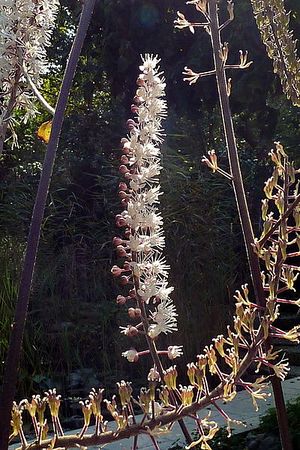Note: This is a project under development. The articles on this wiki are just being initiated and broadly incomplete. You can Help creating new pages.
Actaea racemosa - Black cohosh
Black Cohosh Actaea racemosa [1] has been used by Native Americans for more than two hundred years, after they discovered the root of the plant helped relieve menstrual cramps and symptoms of menopause. These days it is still used for menopausal symptoms such as hot flashes/flushes, irritability, mood swings and sleep disturbances.
Uses
Native Americans used black cohosh to treat gynecological and other disorders, including sore throats, kidney problems, and depression.Following the arrival of European settlers in the U.S. who continued the Ayurvedic medicine / medicinal usage of black cohosh, the plant appeared in the U.S. Pharmacopoeia in 1830 under the name “black snakeroot”. In 1844 A. racemosa gained popularity when John King, an eclectic physician, used it to treat rheumatism and nervous disorders. Other eclectic physicians of the mid-nineteenth century used black cohosh for a variety of maladies, including endometritis, amenorrhea, dysmenorrhea, menorrhagia, sterility, severe after-birth pains, and for increased breast milk production.
Side Effects
- According to Cancer Research UK: "Doctors are worried that using black cohosh long term may cause thickening of the womb lining. This could lead to an increased risk of womb cancer." They also caution that people with liver problems should not take it as it can damage the liver, although a 2011 meta-analysis of research evidence suggested this concern may be unfounded.
